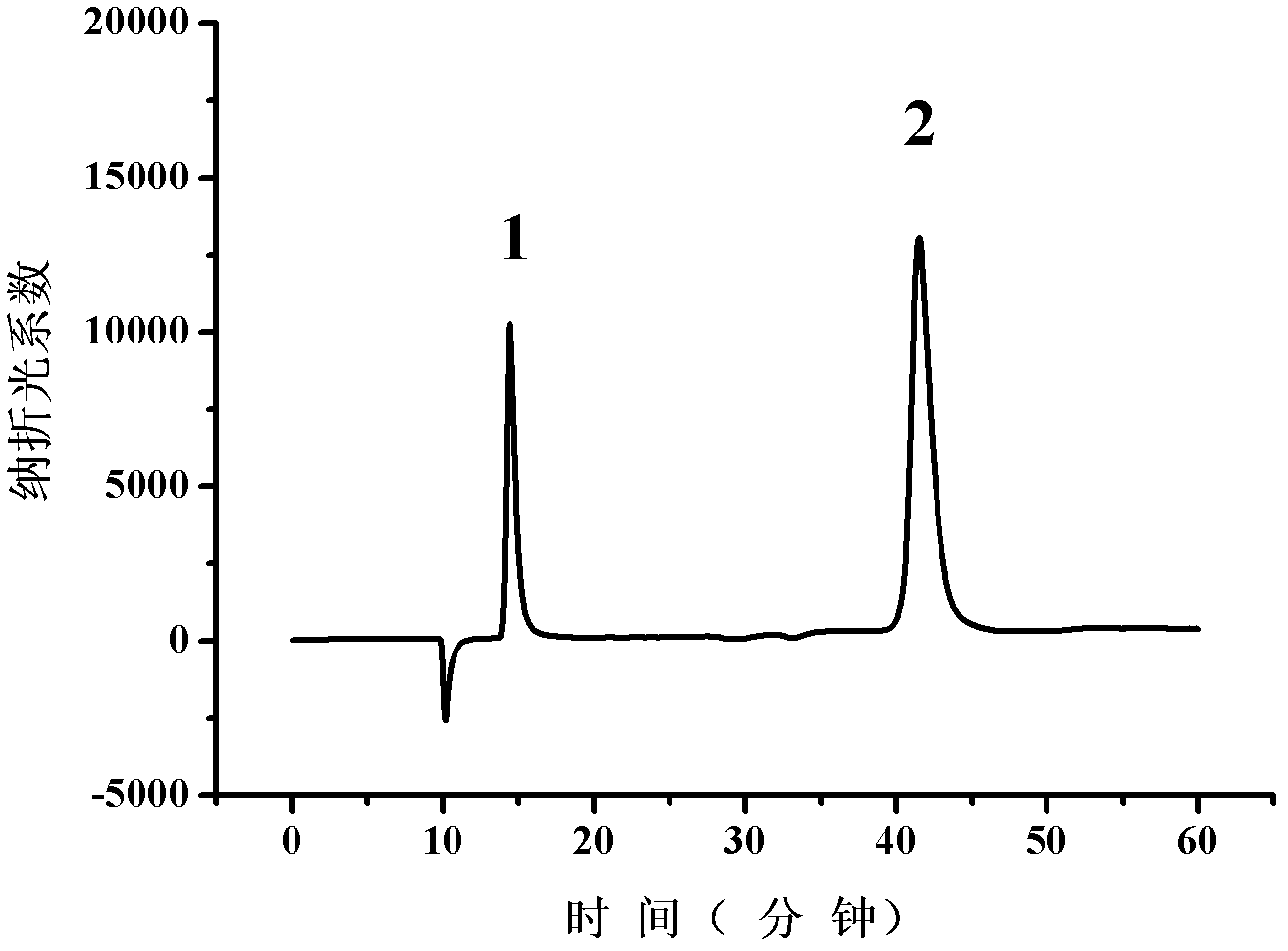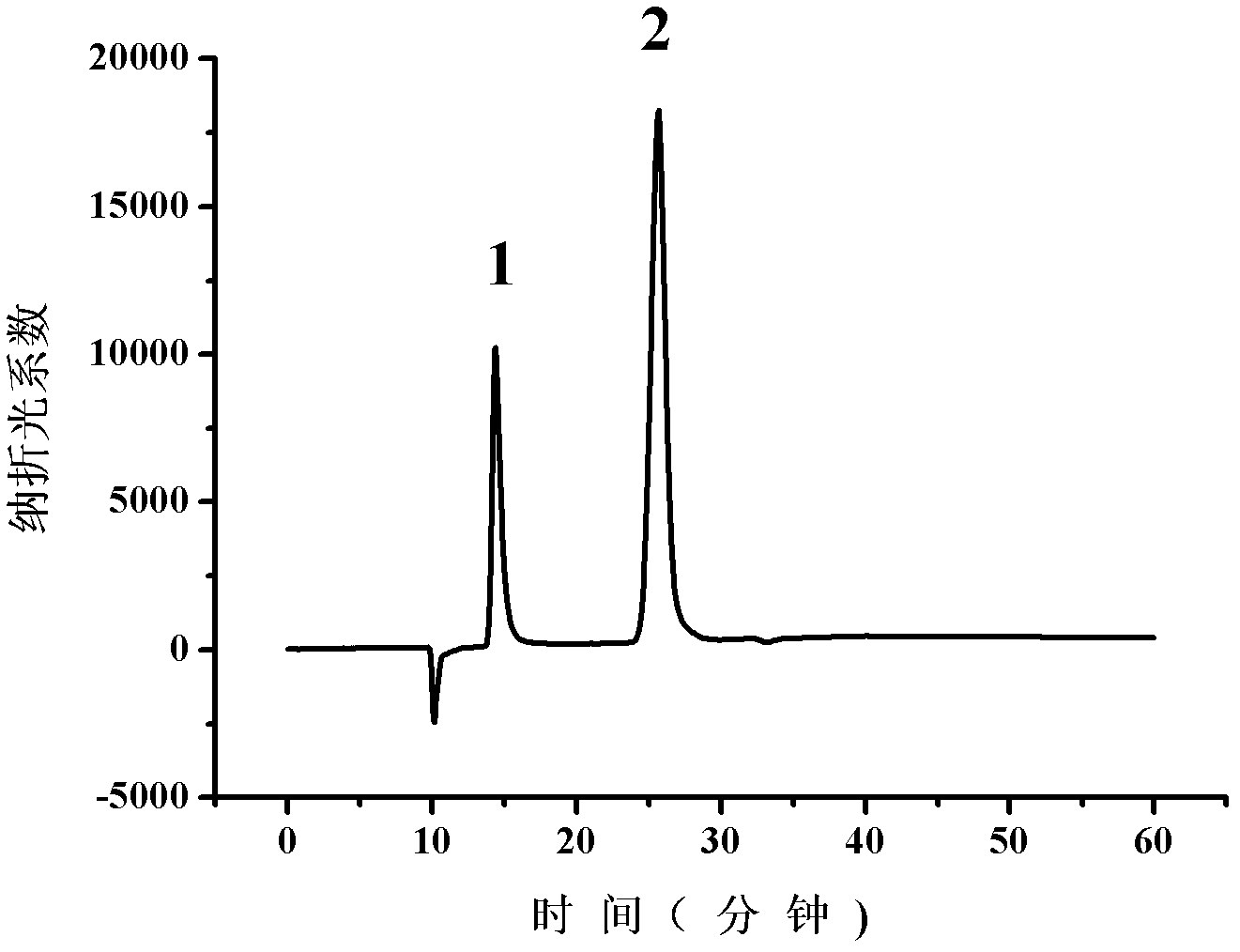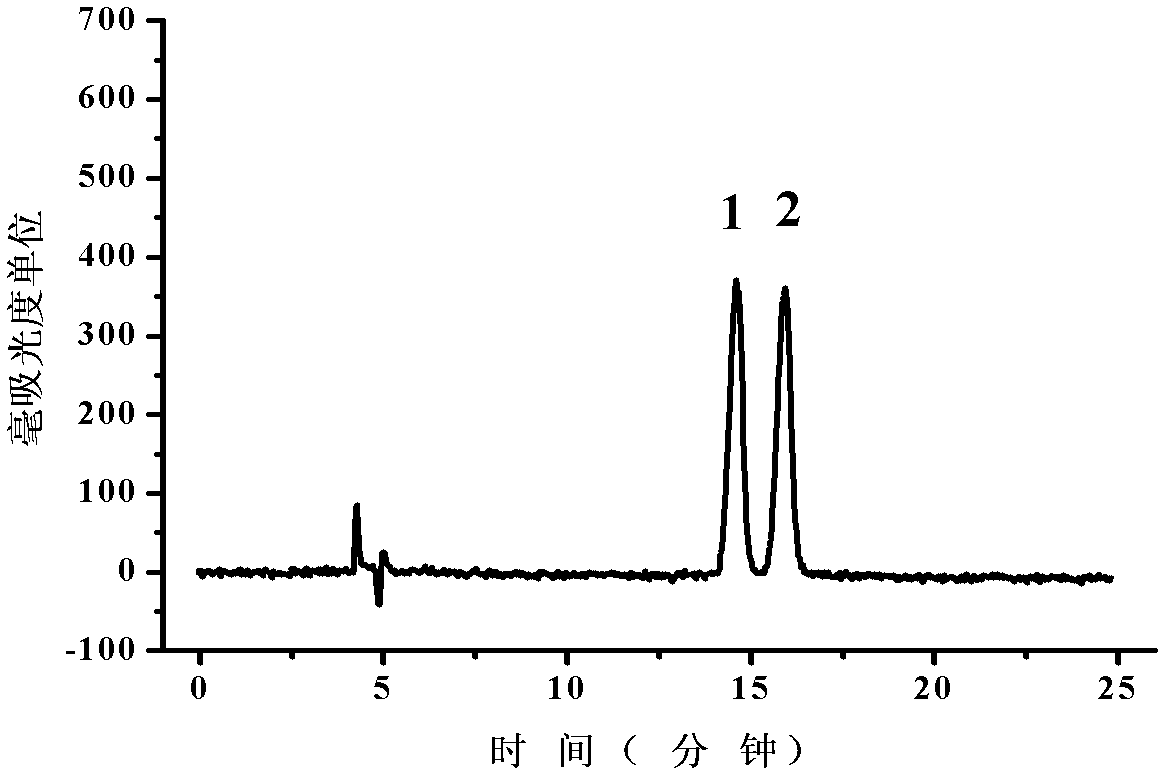Engineering bacteria for expressing L-lactate dehydrogenase subjected to orthogenetic evolution and application thereof
A lactate dehydrogenase and directed evolution technology, which is applied in the application field of splitting racemic mandelic acid and producing R-mandelic acid and acetophenone acid, achieving obvious effect, short growth cycle and high substrate concentration. Effect
- Summary
- Abstract
- Description
- Claims
- Application Information
AI Technical Summary
Problems solved by technology
Method used
Image
Examples
Embodiment 1
[0050] Example 1: Construction of engineering bacteria expressing directed evolution L-lactate dehydrogenase
[0051] (1) Genomic DNA of Pseudomonas stutzeri (Pseudomonas stutzeri SDM, CCTCC No.M206010) was prepared by conventional methods. For this process, please refer to the small part of the bacterial genome in the "Guidelines for Molecular Biology" published by Science Press. method of preparation. The gene encoding L-iLDH was amplified from the genome of Pseudomonas stutzeri SDM using a PCR reaction.
[0052] The PCR reaction procedure is:
[0053] a. Pre-denaturation at 95°C for 10 minutes
[0054] b. Denaturation at 95°C for 30 seconds
[0055] c. Annealing at 60°C for 30 seconds
[0056] d. Extend at 72°C for 1 minute
[0057] Repeat process b-d for 30 cycles
[0058] e. Supplementary extension for 10 minutes
[0059] The primers used are:
[0060] Upstream primer lldU: AAGCTTATGATCATTTCCGCCTCTACC, containing HindIII restriction site
[0061] Downstream prime...
Embodiment 2
[0085] Example 2: Application of Highly Expressed Mutant L-iLDH Engineering Escherichia coli in Resolution of Racemic Mandelic Acid
[0086] (1) Preparation of Escherichia coli complete cells expressing mutant L-iLDH:
[0087] Plate culture: Streak inoculation of Escherichia coli C43 (DE3) strain containing pETDuet-1-mlldD vector on solid LB medium containing ampicillin at a concentration of 1 mg / ml, culture at 37°C for 12 hours, pick Take a single colony;
[0088] Seed culture: Inoculate the picked single colony into 5 ml of liquid LB medium containing ampicillin at a concentration of 1 mg / ml, and incubate at 37°C for 10 hours;
[0089] Preparation of high-expression mutant L-iLDH whole-cell catalyst: transfer the seeds to 1 liter of LB medium (as in a 5-liter Erlenmeyer flask) with a 1% inoculum size, and cultivate at 37°C until OD 620nm When reaching 0.6, add isopropylthiogalactopyranoside (IPTG) at a final concentration of 1 mmol / L to start inducing the expression of the...
Embodiment 3
[0092] Example 3: Application of Highly Expressed Mutant L-iLDH Engineering Escherichia coli in Resolution of Racemic Mandelic Acid
[0093] (1) Preparation of Escherichia coli complete cells expressing mutant L-iLDH:
[0094] Plate culture: Streak inoculation of Escherichia coli C43 (DE3) strain containing pETDuet-1-mlldD vector on solid LB medium containing ampicillin at a concentration of 1 mg / ml, culture at 37°C for 12 hours, pick Take a single colony;
[0095] Seed culture: Inoculate the picked single colony into 5 ml of liquid LB medium containing ampicillin at a concentration of 1 mg / ml, and incubate at 37°C for 8 hours;
[0096] Preparation of high-expression mutant L-iLDH whole-cell catalyst: transfer the seeds to 1 liter of LB medium (as in a 5-liter Erlenmeyer flask) with a 1% inoculum size, and cultivate at 37°C until OD 620nm When 0.5 was reached, isopropylthiogalactopyranoside (IPTG) was added at a final concentration of 1.2 mmol / L to start inducing the express...
PUM
 Login to View More
Login to View More Abstract
Description
Claims
Application Information
 Login to View More
Login to View More - R&D
- Intellectual Property
- Life Sciences
- Materials
- Tech Scout
- Unparalleled Data Quality
- Higher Quality Content
- 60% Fewer Hallucinations
Browse by: Latest US Patents, China's latest patents, Technical Efficacy Thesaurus, Application Domain, Technology Topic, Popular Technical Reports.
© 2025 PatSnap. All rights reserved.Legal|Privacy policy|Modern Slavery Act Transparency Statement|Sitemap|About US| Contact US: help@patsnap.com



